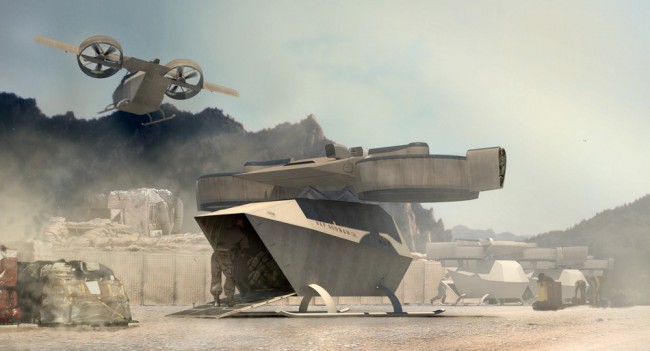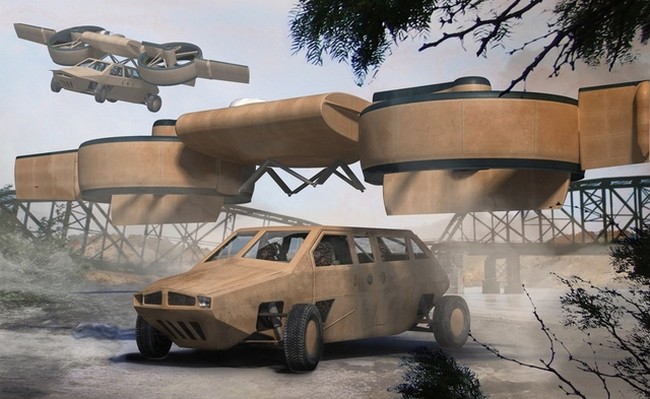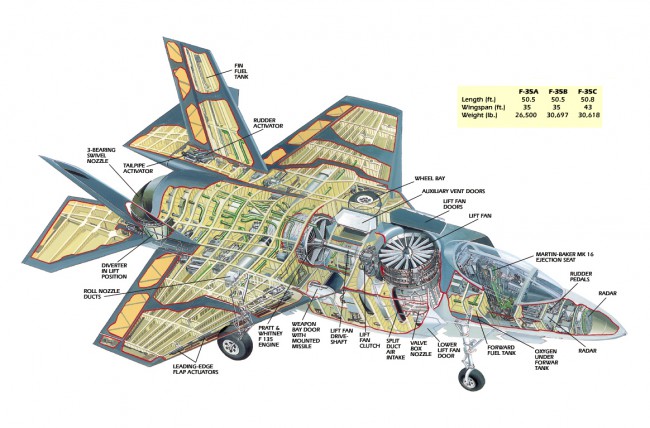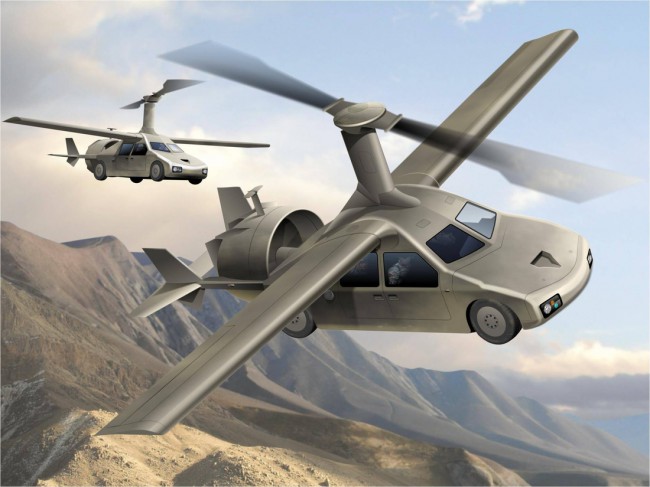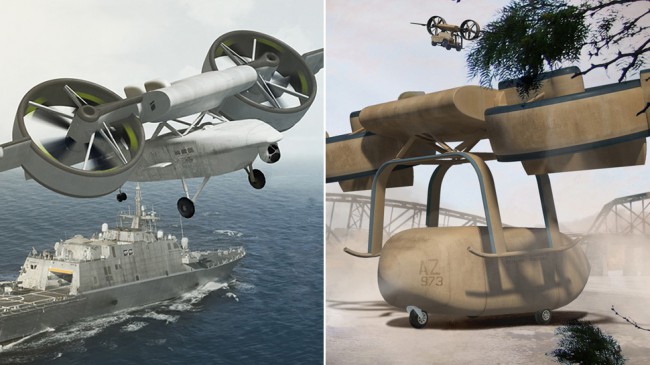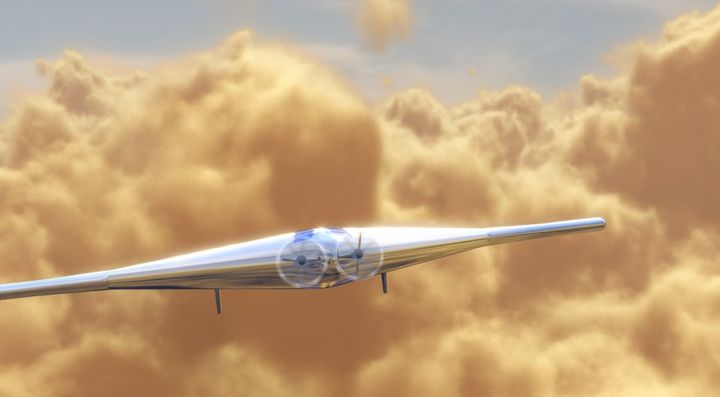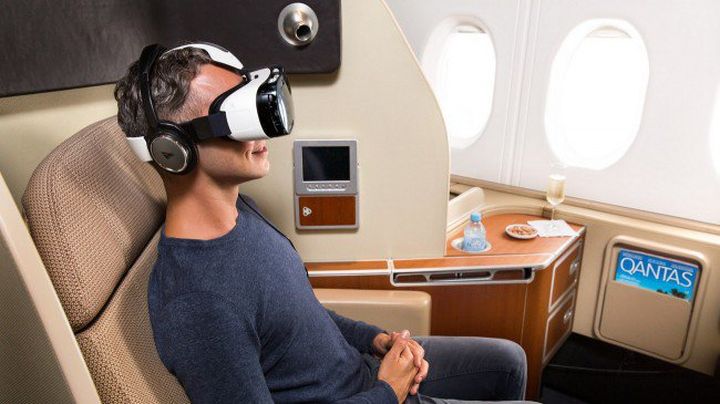First on the program Transformer TX, which aims to create the first prototypes of vehicles that can move equally well on land and by air, the Agency for Defense Advanced Research Projects USA (DARPA) became known in 2009.
Recall that even if one of the requirements for flying cars, Transformers was the requirement to implement the feasibility of vertical take-off and landing, as the rocket Grasshopper . The draft Transformer TX agency DARPA is going to take on vehicles and helicopters strengths and combine them into one vehicle that can transport soldiers and weapons by land and air, reports ExtremeTech.
Last week, during an exhibition Association for Unmanned Vehicle Systems International were shown several concepts of the project Transformer TX. More than three years of development was enough, and now a team of engineers Lockheed Martin, received the contract to build the Transformer TX, ready to begin the third phase of the project, which allocated $ 20.3 million – to begin work on the first prototype. This concept specialists Lockheed Martin joined several technologies from different fields, ranging from autonomous drones and ending with ducted propellers. The project, which some time ago that another attempt to create a flying car, now looks much more real than ever.
One of the main features that allows Transformer TX less vulnerable than modern military helicopters, a special design of the propellers. Instead, the rotor is mounted on the roof of a car in a pair of ducted propellers. It should be noted that this development is not new and has repeatedly met in real life (blimps, hovercraft and aircraft Martin Jetpack ), and the company Lockheed Martin has been using this technology in their fighters vertical takeoff and landing, for example, model F-35. However, at the same time with the channel fans to improve fuel efficiency and increase the maximum speed for level flight in an F-35 jet engines used.
According to preliminary data, Transformer TX on one tank of fuel will be able to cover the distance of 400 km. This is almost two times lower than the usual range transport helicopter Sea Knight.
However, the benefits from ducted propellers as much. In size they are much less compared to the rotor, which makes them safer. Thus for this system equipped with landing flying vehicle require less space (about half of the area required for a conventional helicopter). It is also known that Transformer TX will have a modular design.
If it was initially planned that the vehicle will be able to carry four passengers and will be like a sedan with a rotor of a helicopter and small plane wings, now discusses a wide range of functions and the payload: the military, equipment, food, and even all-terrain Humvee. Another key feature of the project will be the Transformer TX system of autonomous flight. Perhaps it will be control by remote control or from a special protected cabin, located inside the vehicle. Unfortunately, other details have not been disclosed.
Incidentally, another requirement for compliance Transformer TX is given size – not more than 2.6 m in width and 9.14 m in length. This will allow it to move freely in the single-lane road.
Lockheed company plans to begin testing a miniature version of the Transformer TX (1/3 of actual size) in wind tunnels by the end of the year, and the first working prototype will be ready in 2015.
Read another very interesting article about alternative energy of the Sun, water and air.

